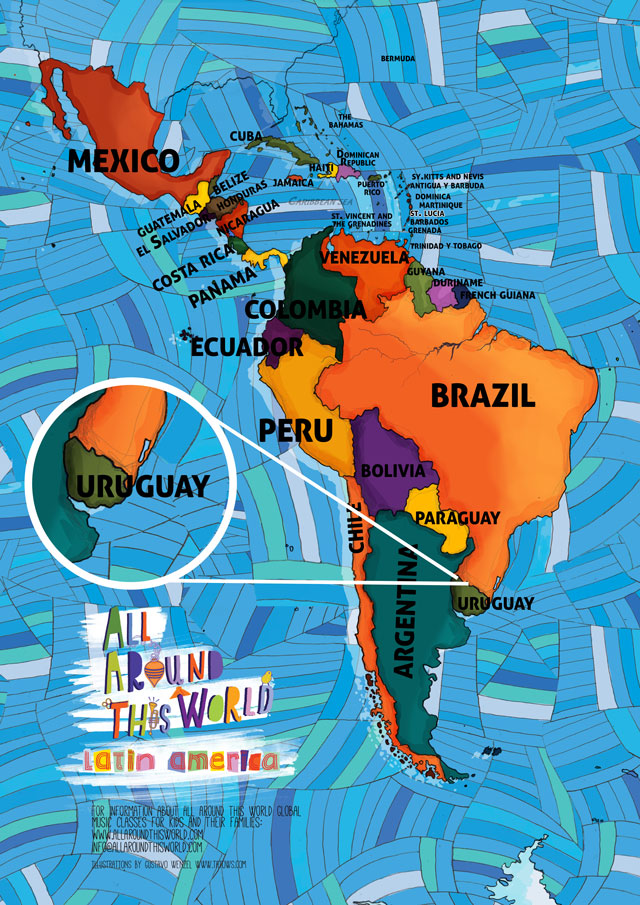This week’s online class for kids explores Uruguay. We greet each other in a language that’s a mix of Spanish and Portuguse and spend a day on the plains drinking mate with GAUCHOS.
Uruguay may not have a lot of big-name recognition in the U.S., but since emerging from years of military rule in the ’70s and early ’80s, it has become not just one of Latin America’s most politically and economically stable nations, but truly “a hidden gem.” Uruguay boasts almost everything a visitor would hope to find in a welcoming Latin America country: tourist-ready beaches, pristine coastal wetlands mountain uplands where proud cowboys (“gauchos”) still roam, the tango!, and energizing, Afro-Uruguayan music. It also seems to have much of what a resident would want: a generally high standard of living, a relatively favorable view of its government (according to the Ibero-American Consortium of Market and Research and Advise — and how could they be wrong?), and, apparently, lots of people wearing pink. Almost 90% of Uruguayans are of European immigrant descent — mainly Spanish, but also Italian, French, British and Portuguese — but the country’s shared identity acknowledges the nation’s more nuanced history. According to Everyculture.com’s Uruguay overview, “The [Uruguayan] national identity is a historical blend resulting from the struggle to maintain freedom from Spain and later from Argentina and Brazil, the gaucho culture, African slave roots, political caudillismo; and a European cultural and intellectual model.”


